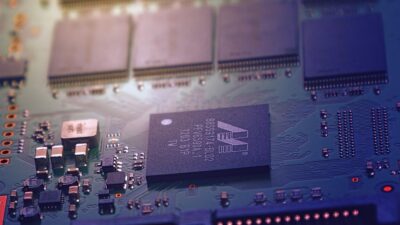In the world of PC gaming and graphic design, two dominant players have stood the test of time: AMD’s Radeon and NVIDIA’s GeForce. The fierce rivalry between these two graphics card giants has sparked intense debates among enthusiasts, gamers, and professionals alike. With each new generation of products, the stakes are raised, innovations are introduced, and the question remains — which brand offers the ultimate graphics performance? Let’s delve into the specifics of each contender to see which one reigns supreme.
Performance: Raw Power and Benchmarks
GeForce
NVIDIA’s GeForce line has been synonymous with high performance, especially in the realm of gaming. With the introduction of the RTX 30 series, NVIDIA has upped the ante with remarkable improvements in ray tracing and AI-driven technologies. Their proprietary DLSS (Deep Learning Super Sampling) technology significantly boosts frame rates while maintaining image quality, giving gamers a competitive edge. In benchmark tests, GeForce cards often excel in scenarios featuring intensive graphical demands.
Radeon
AMD’s Radeon series has made significant strides over the years, particularly with the introduction of the RX 6000 series. The architecture offers competitive performance and has closed the gap in various benchmarks. While its ray tracing capabilities may not quite reach the levels of NVIDIA’s offerings, AMD emphasizes its Smart Access Memory and FidelityFX technologies, both designed to optimize frame rates and increase efficiency. For gamers on a budget, Radeon cards often provide excellent price-to-performance ratios.
Features: Technologies That Matter
Ray Tracing and DLSS
NVIDIA’s expertise in ray tracing takes graphical fidelity to new heights, creating incredibly realistic lighting and shadow effects. Coupled with the DLSS technology, it enables users to enjoy higher frame rates without sacrificing quality, particularly in demanding games.
AMD has responded with ray tracing support in its latest series but does not yet rival NVIDIA’s implementation. However, FidelityFX Super Resolution (FSR) serves a similar purpose to DLSS and promises to enhance performance in a way that minimizes the performance impact.
Software and Drivers
Both companies offer robust software solutions for managing graphics settings. NVIDIA’s GeForce Experience allows for easy game optimization, driver updates, and gameplay recording features. Conversely, AMD’s Radeon Software Adrenalin Edition offers user-friendly overclocking capabilities, performance monitoring, and game enhancements. Both platforms have their strengths—NVIDIA might edge out slightly in broader compatibility and feature richness.
Price-to-Performance Ratio
When it comes to pricing, AMD has traditionally offered a more attractive price-to-performance ratio. Radeon cards frequently deliver excellent performance levels at a lower cost compared to their GeForce counterparts. However, pricing can fluctuate dramatically due to market conditions and spikes in demand, particularly during product launches.
Ecosystem and Compatibility
NVIDIA’s partnerships with third-party software and hardware producers (think of NVIDIA G-Sync technology) create a rich ecosystem that can enhance overall gaming experiences. On the other hand, AMD’s FreeSync technology is gaining ground, especially since it’s broadly compatible with various monitors.
Power Consumption and Thermal Performance
Historically, NVIDIA cards have been more power-efficient, particularly with their latest architecture efficiencies. In contrast, some Radeon cards may draw more power, especially under heavy loads. That said, AMD has made advancements in thermal performance, with many of their recent models offering commendable cooling solutions.
Conclusion: Which Reigns Supreme?
The answer to whether Radeon or GeForce reigns supreme ultimately depends on individual needs and use cases. Gamers seeking high-end performance and cutting-edge features like ray tracing and DLSS may lean toward NVIDIA’s GeForce. On the contrary, budget-conscious users or those focused on value for money may find AMD’s Radeon series to be the more sensible choice.
In an era where gaming demands continually rise, both companies are committed to pushing the technological envelope. Following this close rivalry, it’s evident that consumers stand to benefit the most, enjoying the best of what each brand has to offer.
As technology evolves, the graphics wars will continue to rage on, propelling innovation and setting new benchmarks for performance and efficiency. Ultimately, the best graphics card is the one that best fits your needs, whether that be in gaming, design, or everyday use. Choose wisely, and may the best GPU win!

